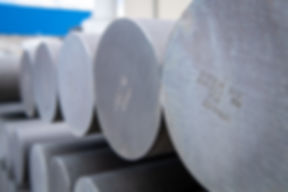
Sustainable life cycle
We have carefully selected materials. The materials used in Freepower must both withstand a tough maritime environment for many years and at the same time create the least possible CO2 footprint. Not only during the materials' own lifespan in Freepower but also during future lives and in their value chains.
Photo: Hydro/Halvor Molland
100% recyclable hull
The hull makes up 85% of the total weight of the materials in Freepower, which makes it the most important material from an environmental point of view.
We have chosen aluminum because that material is 100% recyclable, strong, light and salt water resistant. The aluminum is supplied by Norsk Hydro, whose factory operates with electricity from hydropower.
Battery 80% recyclable
The second largest component by weight is the battery, whose the casing is made of aluminum.
In our quest for climate neutrality from the factory, we have developed our own lithium battery together with Hugo Tillquist, Sweden, which today can be recycled to 80%.
The technology used is called hydrometallurgy, and is based on a patent held by the electricity supplier Fortum.
Fortum has a mechanical waste recycling plant in Ikaalinen, Finland. The plant dismantle the parts before they are recycled at Fortum's hydrometallurgical plant in Harjavalta, Finland, which already operates on an industrial scale. The two-step process enables the recycling of finite earth metals in the batteries, e.g. lithium, nickel, cobalt and manganese.
Fortum's ambition is to reach a 95% recycling rate in the coming years. Read Fortum's own press release about this subject.


Hydro's recycling plant in Clervaux, Luxembourg, produces low-carbon aluminium products from post-consumer aluminium. (Photo: Hydro/Halvor Molland)

Havplast finnes i store mengder langs norskekysten. Her fra en vik på Stadlandet. Foto: Norwegian Trash

POD 95% recyclable
The third largest component is the azimuth pod from SeaDrive, which is mainly made of aluminum bronze and stainless steel, both of which are recyclable metals and corrosion-resistant in salt water for long life.
Wreck plastic in interior
Some components, e.g. electronic board and furnishings, are made of recycled wreckage plastic.
We collaborate with Norwegian Trash, whose business concept is to manufacture new wreck plastic products. They grind down the plastic into granules which is melted and then casted into new products.
Plastic has good material properties and has a long service life. If we can give new life to plastic that has drifted ashore instead of re-manufacturing, it is good for the environment.
Gentle antifouling
We collaborate with Jotun, which is at the forefront of the development of antifouling paints that both fit aluminum boats and are gentle on shallow coastal ecosystems in our archipelago.
